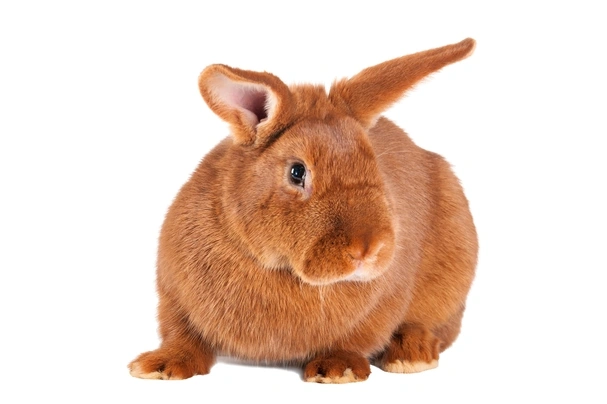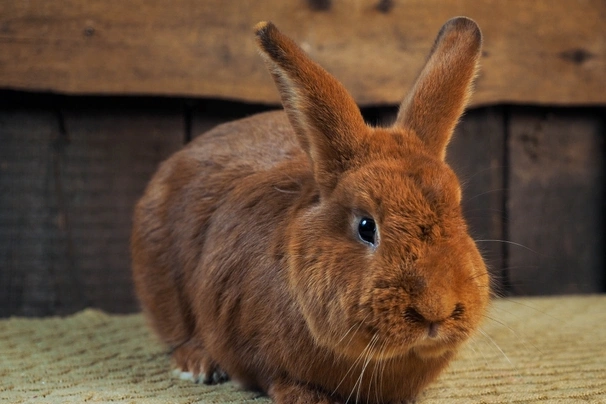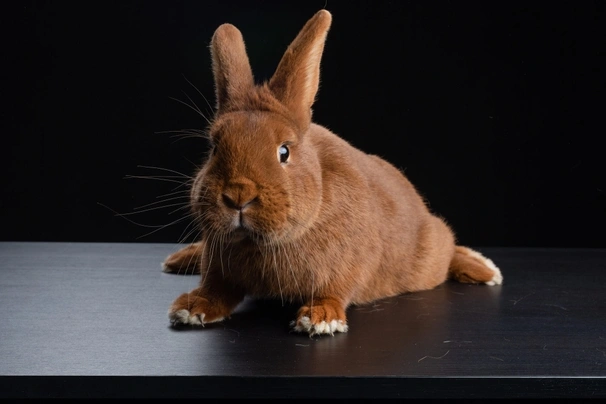New Zealand
Introduction of the New Zealand
Rather than originating in New Zealand, the New Zealand Rabbit was actually developed in the US. The American Rabbit Breeders Association currently recognise the New Zealand in four separate colours: white, red, black and broken – where a solid colour is mixed with patches of white. There are currently efforts to try and create a blue New Zealand, but these have not yet reached fruition.
The New Zealand is a large breed of rabbit that can weigh anywhere between nine to 12lbs which is (or certainly used to be!) predominantly used for meat and for fur.
History of the New Zealand
The New Zealand was originally developed to meet the demands of the meat and fur trade in the early part of the 20th Century. The meat trade in particular was booming following the Great Depression of the 1920s and there were many hungry mouths to feed across the US.
These days this large rabbit is kept as a companion or show animal and is sometimes used as a laboratory animal too. Although it first appeared in America in around 1917, the breed didn’t make its way across the Atlantic to the UK until after the Second World War. The fact it grows at a very rapid rate secured its use as meat animal both in the US and in the UK, as the country began to recover from the ravages of war.
It’s thought the New Zealand has the Flemish Giant, American White and Angora in its ancestry and while the White was the first to be developed, the Black and Red followed closely and were also bred in the US. The White was accepted by ARBA in 1925, with the Red and Black following suit in 1926 and 1958 respectively.
Appearance of the New Zealand
- Main colourways: white, red, black and broken
- Average weight: 4.5 – 5.5kg
As a large rabbit, the New Zealand displays a dense, luxurious coat which should ‘spring back’ to its original position when brushed the wrong way. The undercoat is soft and thick and interspersed with harsher guard hairs. The body should be deep, broad and long, with a wide, well-rounded head on a barely discernible neck.
The ears of the New Zealand must be in proportion to the rest of the body and have a good covering of fur with rounded tips. The flesh should feel solid and firm and the coat must be glossy. The Red is slightly smaller than the other colours, with slightly coarser fur. The Red should be of a medium length and should be well-rounded, but must weigh around 3.6kg – around a full kilogramme less than the other colours. The body of the Red should be shapely and the head will be of a good size and fairly broad. The legs should be straight and display medium bone and again, the Red variant should have firm muscle mass.
Temperament of the New Zealand
The New Zealand is an exceptionally calm rabbit and makes an excellent companion. Despite their large size they are remarkably docile and quite easy to handle. They are also clever and can be trained to carry out simple tasks like coming when called and using a litter tray.
Even though they are relatively easy to handle, it’s important that anyone who may have to pick the rabbit up, is familiar with handling techniques. The rabbit’s weight must always be supported carefully as if he is allowed to become uncomfortable or feel unsafe, he may struggle. This is a large strong animal that can easily cause injury to himself or his handler if he gets in a flap.
Health of the New Zealand
The New Zealand is generally a hardy breed, but there a number of health issues that can affect all rabbits that any good owner must watch for and address if they arise.
As a rodent, the teeth of the rabbit will grow continually. They need to be worn down to prevent overgrown molars or enamel spurs. In order to keep the teeth worn down the rabbit must be given a diet that includes lots of fibrous vegetables and roughage. Gnaw toys will also help keep the teeth in check. Any overgrowth can cause injury to the soft tissues of the mouth and even make eating difficult so any problems need to be attended to without delay.
All rabbits should be able to groom themselves properly – this means their diet should be monitored and carefully planned to prevent the animal from becoming obese. An overweight rabbit will be unable to keep itself clean and flies can be attracted to soiled areas of fur. These flies could lay their eggs on the fur and the resulting maggots may burrow into the animal’s skin. Flystrike will require immediate veterinary treatment.
All rabbits must be vaccinated against myxomatosis and Viral Haemorrhagic Disease and they should also be treated regularly for fleas, ticks and worms. Non-breeding females can also be spayed, as this can help prevent uterine cancer, which is common in rabbits.
Caring for the New Zealand
Is your New Zealand going to live indoors or out? Most people prefer to house a rabbit like the New Zealand in the home simply because of its size. Any hutch would have to provide adequate floor space for him to hop around and it must be high enough for him stand upright. This means the hutch would have to be very large. If you do opt for a hutch it must be weatherproof and placed out of the worst of the weather. If you have a light, airy shed this would be ideal. The hutch should be lined with hardwood shavings and straw and the hutch should also have a nesting area. It must be cleaned out thoroughly once a week, with droppings removed daily.
If you would prefer your rabbit to live indoors he should be provided with a secure area he can relax in. A large dog crate is perfect for this. He should be taught to use a litter tray and kept away from cables and wires. Whether he’s going to live in the house or not, he should be given regular access to the outdoors, either in a large run or in a secure area of garden, and he will also enjoy playing with cardboard tubes and boxes and toys intended for cats and dogs.
His diet should consist of good quality pellets, good hay and lots of vegetables – dandelions, kale, carrot tops and cabbage are particular favourites and will help keep his teeth in good order. He must also have access to clean, fresh drinking water at all times.

Rabbit for cheap! Sale
£10

Adorable baby New Zealand White bunnies
£40
3 BUNNIES LEFT 🐰🐇
£50


